By Annabella Farmer / Searchlight New Mexico
LOS ALAMOS — Los Alamos began as an “instant city,” springing from the Pajarito Plateau in 1943 at the dawn of the Atomic Age. More than 8,000 people flocked here to work for Los Alamos National Laboratory and related industries during the last years of World War II. Now the city may be on the brink of another boom as the federal government moves forward with what could be the most expensive warhead modernization program in U.S. history. Under the proposed plan, LANL will become home to an industrial-scale plant for manufacturing the radioactive cores of nuclear weapons — hollow spheres of plutonium that act as triggers for nuclear explosions. The ripple effects are already being felt.
Roads are planned to be widened to accommodate 2,500 extra workers. New housing developments are appearing, one of them about a mile from large white tents that house drums of radioactive waste. And these are just the signs visible to the public: Within the lab, workers are busy around the clock to get facilities ready to produce the first plutonium core next year.
The cores — known as pits — haven’t been mass-produced since the end of the Cold War. But in 2018, under pressure from the Trump administration, the federal government called for at least 80 new pits to be manufactured each year, conservatively expected to cost $9 billion — the lion’s share of a $14.8 billion weapons program upgrade. After much infighting over the massive contract, plans call for Los Alamos to manufacture 30 pits annually and for the Savannah River Site in South Carolina to make the remaining 50.
The idea of implementing an immense nuclear program at Los Alamos has sparked outrage among citizens, nuclear watchdogs, scientists and arms control experts, who say the pit-production mission is neither safe nor necessary. Producing them at Los Alamos would force the lab into a role it isn’t equipped for — its plutonium facilities are too small, too old and lack important safety features, critics say.
The lab has a long history of nuclear accidents that have killed, injured and endangered dozens if not scores of people. As recently as January, the National Nuclear Security Administration, the federal agency in charge of the U.S. nuclear weapons stockpile, launched an investigation into a Jan. 7 leak at the lab that released radioactive material and contaminated six workers.
Studies accumulated over the past five years show that numerous federal agencies are well aware of the risks associated with the latest plan.
“We have a goal that’s not based in any real necessity, and that goal is leading to a rushed and therefore more expensive plan that’s more likely to fail,” said Stephen Young, an arms control and international security expert with the Union of Concerned Scientists.
Criticism of the project has been so widespread, some believed — until as recently as last month — that it might even be tabled.
But now, the war in Ukraine has put the project in the spotlight, prompting politicians and military leaders to say that the United States must build up its nuclear weapons cache in the event of a showdown with Russia.
“I would have said pre-Ukraine there was a chance it would have been shut down,” Young said. But with the war in Ukraine, the floodgates have opened for military spending.
The federal government, for its part, has long called the mission key to national security. For decades, multiple federal agencies have been trying to reestablish a large-scale program of pit production. In the backdrop, New Mexico politicians have fought hard for the billions of dollars and thousands of well-paying jobs the project is promised to bring. And the lab insists that manufacturing the pits will be safe and successful: “It’s a challenging milestone,” LANL spokesperson Jennifer Talhelm told Searchlight New Mexico. “But we are on track.”
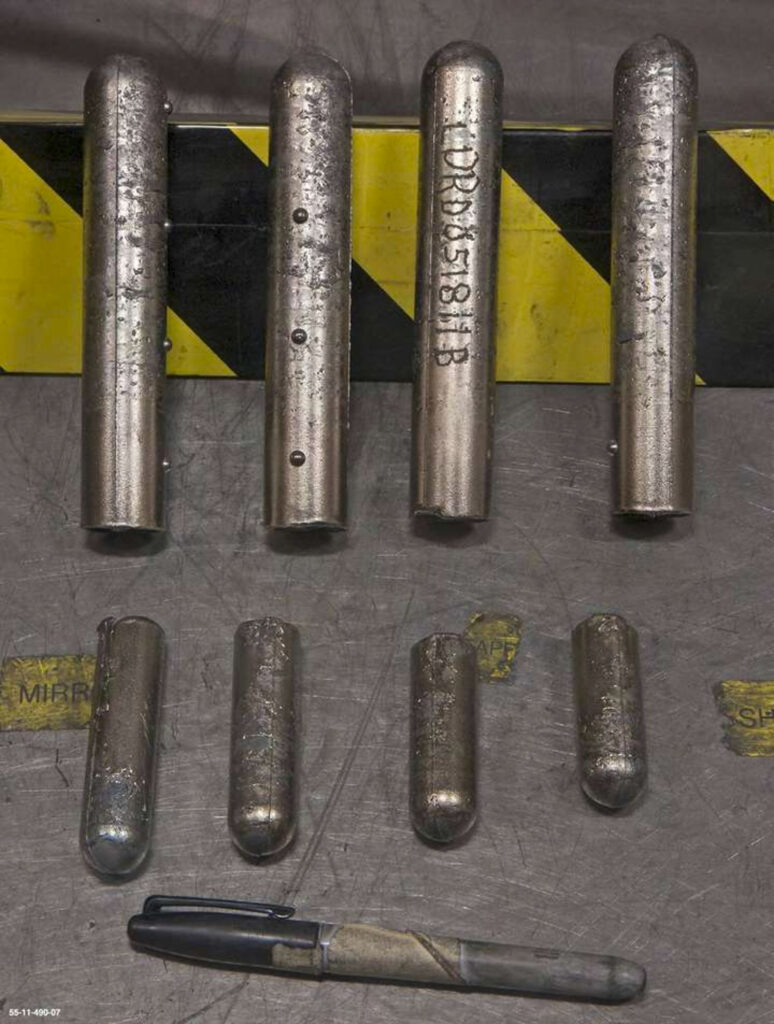
Tripling an atomic goal
Los Alamos National Laboratory produced the first plutonium pits as part of the Manhattan Project in 1945. Just one of these pits triggered the atomic bomb detonated at the Trinity Site in southern New Mexico, and one triggered the bomb called Fat Man that destroyed Nagasaki.
Since the end of World War II, pit production at Los Alamos has been largely limited to research and design purposes. Fabricating a pit is a challenge: The greatest number the lab has ever produced in a single year is 11. Now the goal is to nearly triple that number.
The project’s opponents say that industrial-scale pit production at Los Alamos would mean a drastic shift in the lab’s purpose, requiring it to become something it was never intended to be. “There’s a whole host of engineering reasons why making pits at Los Alamos is a bad idea,” said Greg Mello, one of the project’s most vociferous and influential critics.
Together with his wife, Trish Williams-Mello, he has been meticulously monitoring the lab for more than 30 years and has been opposing the pit project since its inception. Los Alamos National Lab, he says, “was never designed for this purpose. It’s not yet been made safe and may never be safe.”
Within LANL’s cramped, outdated facilities, pit production will require a huge influx of staff — some 2,500 technicians, security forces, facility operators, craft workers, engineers, scientists, professional staff and others — to perform what Mello describes as “a ballet of complexity,” working day and night to meet production goals.
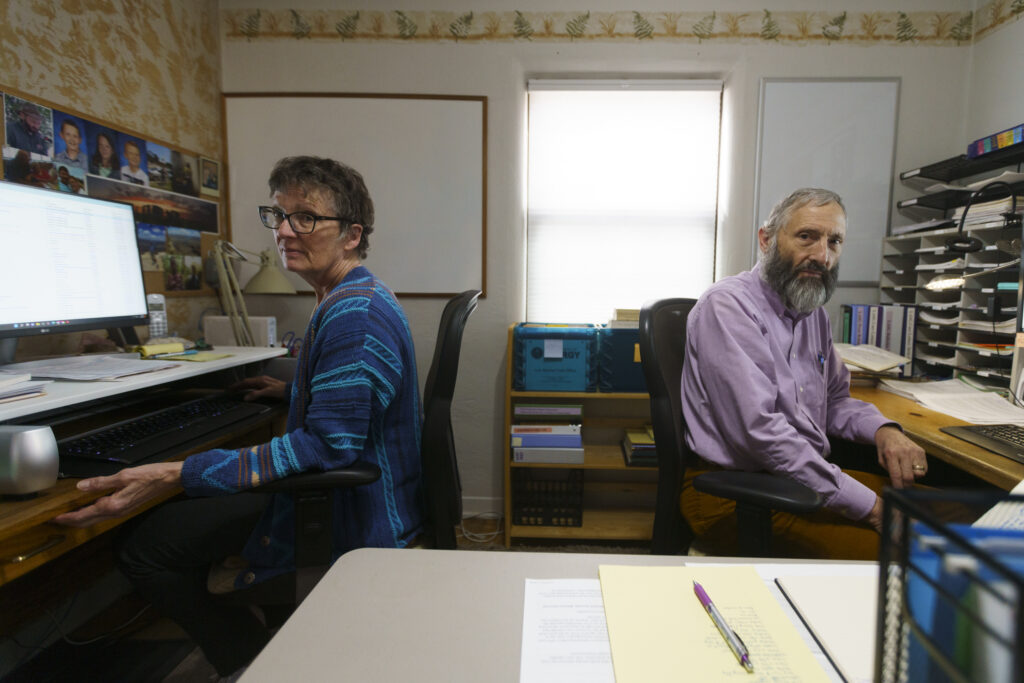
Indeed, last month, inspectors for the Defense Nuclear Facilities Safety Board reported that renovations and other preparations for plutonium operations were underway seven days a week, 24 hours a day — an intensity that will “significantly ramp-up” in the long term, the board said.
Shift work is typical in the nuclear industry. But studies show that working at night can increase the likelihood of accidents. The fatigue it causes can lead to “severe consequences to security, safety, production, and cost,” the Oak Ridge National Laboratory reported in 2020. The report pointed to shift work as a contributing factor in the 1979 reactor meltdown at Three Mile Island, the worst nuclear power plant accident in U.S. history.
“Los Alamos management should have picked up the phone when they first realized they were going to have to do multiple shifts and said, ‘I’m so sorry, but this is too much,’” Mello said. “It’s proven that work on the graveyard shift is more dangerous — people are just not at their best.”
Federal reports, independent assessments, studies by the National Nuclear Security Administration and LANL itself offer a snapshot of the lab’s other shortcomings. Among them:
– In 2020, a withering report by the Government Accountability Office leveled a litany of criticisms at the plans to manufacture plutonium pits, noting that the National Nuclear Security Administration — the agency that oversees LANL — has already spent billions of dollars and more than 20 years trying and failing to reestablish pit production. During that time, LANL twice had to suspend operations after the discovery of pervasive safety issues, including a nearly four-year shutdown that ended in 2016.
– Even LANL has doubted its ability to succeed. The lab is only “marginally capable” of ramping up production to 30 pits per year by 2026 and sustaining that rate, it reported in 2018.
– A 2017 assessment by the National Nuclear Security Administration (NNSA) determined that relying solely on Los Alamos for pit production presented an “unacceptably high mission risk.” As a result of the NNSA assessment, the lab was taken out of the running for the pit project. It took intensive lobbying from New Mexico’s Congressional delegation over the next months before the federal government chose Los Alamos to share the mission.
– Between 2005 and 2016, the lab’s “persistent and serious shortcomings in criticality safety” — involving potentially lethal nuclear reactions — was criticized in more than 40 reports by government agencies, safety experts and lab staff, an investigation by the Center for Public Integrity found.
Officials at LANL declined to respond to Searchlight New Mexico’s multiple requests for an interview about these issues. Talhelm, the LANL spokesperson, instead provided a written statement.
“The Laboratory is working to modernize facilities and hire new employees to begin pit production in support of our national security mission to ensure the safety and reliability of the nation’s nuclear weapons stockpile. …We have the only facility in the country where this work is currently possible,” she wrote. “In 2018, NNSA completed an engineering assessment and workforce analysis of the site and found that it can safely meet the requirements of NNSA’s goal of producing at least 30 pits per year.”

A resident skeptic
Greg Mello doesn’t agree with the lab’s assertions about its safety and capabilities. In his view, the pit-production mission is folly.
“The project is entirely unnecessary for the stated purposes,” he said. And it will harm nearby Pueblos and communities, he added, “especially those who are nearest and most fragile.”
Mello is called a hero by some, and difficult by others. But everyone who speaks of him does so with either enthusiastic or grudging respect for his work. He and his wife have had a hand in blocking past nuclear-warhead projects at LANL, and they’re determined to stop the pit project, as well.
The couple’s Albuquerque office is crammed with sensitive and classified documents that they’ve obtained through Freedom of Information Act requests and leaks from within federal agencies. In one case, Mello recalled, they used a stick to open an envelope in the yard, not knowing what was inside — it turned out to be a paper from a Pentagon source identified only as “Dienekes.”
Mello’s background is in engineering, and he studied regional economics and environmental planning at Harvard. In 1989, he founded the nonpartisan Los Alamos Study Group, which has given briefings to the Department of Energy, the NNSA and others on Capitol Hill.
Pit production at LANL is an accident waiting to happen, he believes. “We have no idea, really, what will be the straw that breaks the camel’s back,” he said. “But there are many possibilities.”
History illustrates a number of them. In 2011, for example, carelessness nearly led to catastrophe when technicians placed eight rods of plutonium side by side to snap a photo of them. This violated a fundamental rule of handling plutonium: When too much is put in one place it can begin to react uncontrollably, generating a burst of lethal radiation. After this near-miss, LANL engineers in charge of worker safety resigned en masse, alleging that the lab prioritized profits over safety. The result was the nearly four-year shutdown that ended in 2016.
Now, Mello fears a repeat of the negligence. He also worries about the project’s impacts on local communities, housing and transportation. There’s no workable strategy to get 2,500 more workers — including approximately 1,500 commuters — to the lab every day, he said. (Proposed plans include expanding bus service and parking spots, and encouraging more walking and bicycling for the small percentage of lab workers who live nearby.)
Many lab workers already have to commute, some from great distances, and this isn’t expected to change much. “Some people travel a hundred miles, which is a little crazy to think of every day,” said Randall Ryti, chair of the Los Alamos County Council. New housing and other infrastructure projects are also in the works, but they face obstacles, he said. Among other things, there’s little space to put them: “There’s not a lot of land up here that’s available currently.”
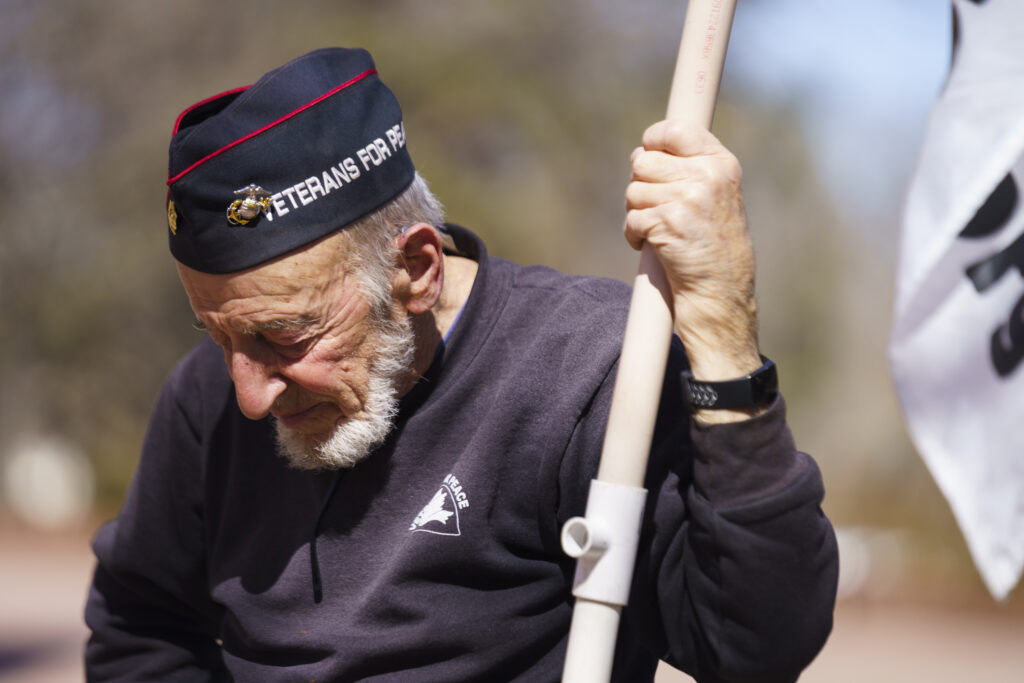
A question of need
There is yet another reason that opposition to the pit project is so fierce: Many experts believe it isn’t necessary.
The project was launched in part because of debates about how age affects plutonium cores in existing nuclear warheads. Nuclear scientists and national laboratories say the pits in the U.S. arsenal will be stable and effective for more than a century.
Project proponents, however, say the pits are degrading and need replacement. As Admiral Charles Richard, commander of the U.S. Strategic Command, told the U.S. Senate Committee on Armed Services on March 8, there is an urgent need to “modernize the nuclear triad” in light of the war in Ukraine. Only a few times in U.S. history has the crisis been so acute, Richard said.
Policy experts, for their part, worry that ramping up pit production will play into an arms race, ratcheting up international tensions.
“There is absolutely no reason to expand pit production capacity in light of Russia’s war in Ukraine,” said Daryl Kimball, executive director of the Arms Control Association. “That would suggest the United States should have a larger nuclear arsenal than we currently have, and that is a dangerous knee-jerk response.”
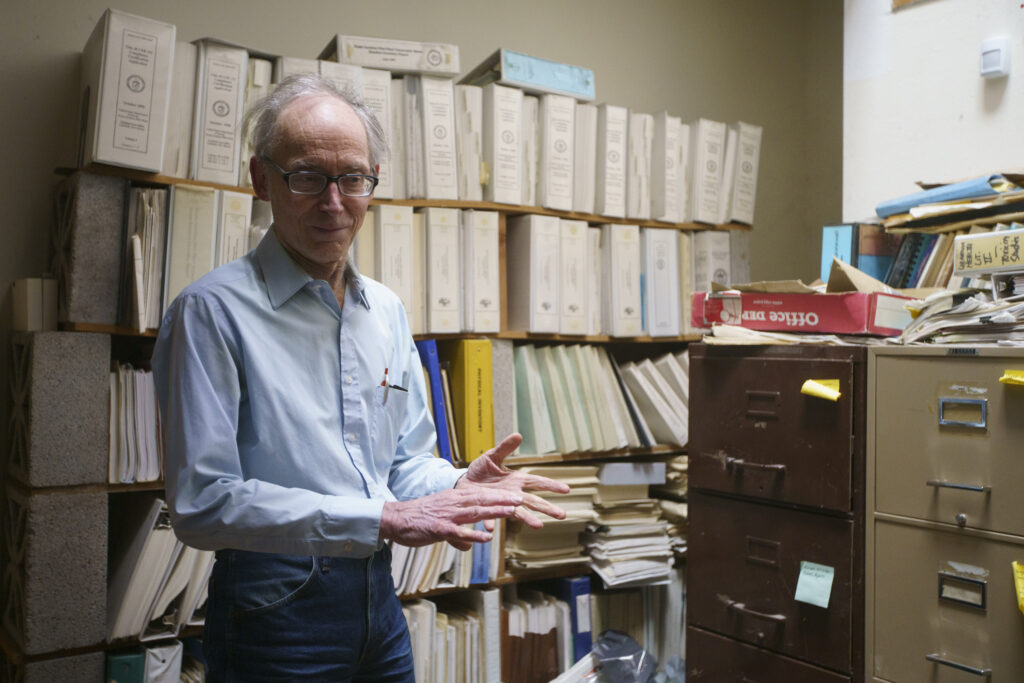
Splitting headaches
Even some of the most ardent supporters of pit production wish the country had better options, and express doubts about splitting the mission between two facilities. Admiral Richard is among them: It will be impossible for LANL and the South Carolina site to make 80 pits each year on schedule, he told the Senate on March 8.
The federal government’s decision to split the work between two sites signaled a lack of confidence in either of them, others have suggested.
“From the beginning, there have always been concerns that LANL couldn’t pull it off,” said Don Hancock of Southwest Research and Information Center, a nonprofit institute focused on the effects of energy development and resource exploitation.
New Mexico politicians have nevertheless fought hard to bring the entire 80-per-year pit production mission to LANL alone. When the NNSA issued a negative assessment of the lab in 2017 — dashing LANL’s hopes for the whole package — U.S. Senators Tom Udall and Martin Heinrich and then-Congressman Ben Ray Luján wrote a scathing letter to the Department of Energy, demanding reconsideration. The negative assessment was “deeply flawed,” they argued.
New Mexico lawmakers continue to voice support. Last month, Heinrich told Searchlight that the state’s national labs “strengthen New Mexico’s economy by providing high-paying, high-skilled technology jobs.”
The money at stake is staggering: at least $9 billion for a decade of work at the two sites, according to the most recent federal cost estimate. Up to $3.9 billion of that will go to LANL, the NNSA says. But the real price tag might run significantly higher: The cost could run as high as $18 billion over a decade, Arms Control Today reported.
In a poor state like New Mexico, it’s not easy to turn down that kind of money. The national labs are the state’s number-one draw for federal funding, according to Michael O’Donnell, acting director of the Bureau of Business and Economic Research (BBER) at the University of New Mexico. This means keeping the labs happy is a top priority for lawmakers.
But the effect of that money isn’t as straightforward as politicians say it is. For one, LANL’s funding tends to stay in Los Alamos County — the wealthiest in the state — resulting in a large wealth gap with surrounding areas. In fact, in the past LANL has had a negative economic impact on nearby Santa Fe, Taos and Rio Arriba counties, a 2019 BBER draft report found. Los Alamos County reaps the taxes for workers’ labor and benefits from their spending, doing little to benefit its neighbors.

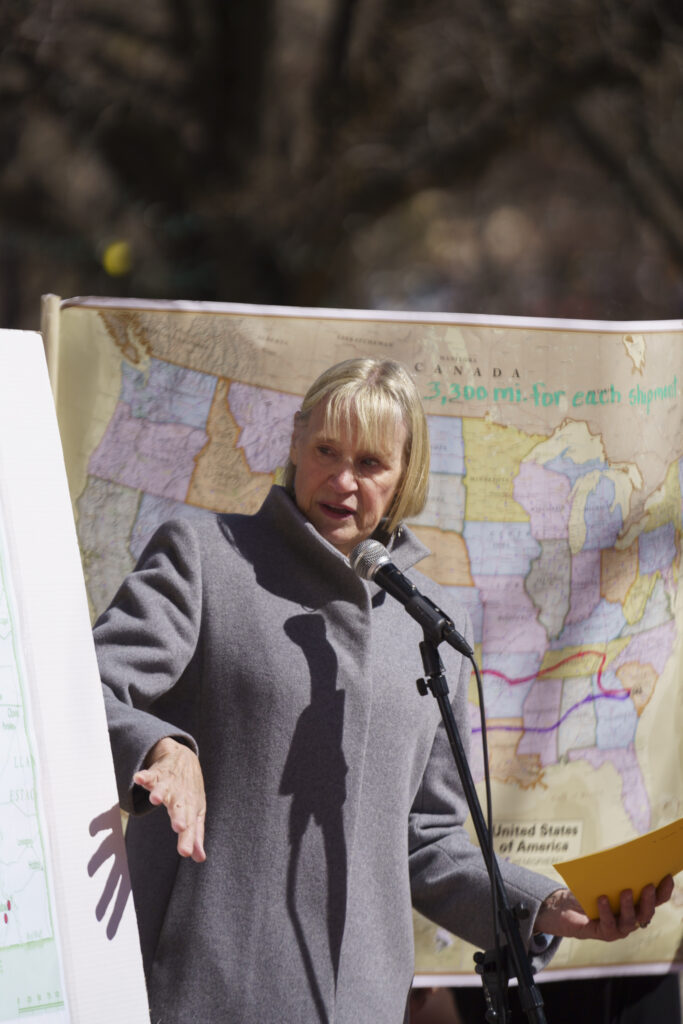
Risk and resistance
The vast funds at stake may also increase the risks associated with the project. The federal government awards contract funds to LANL depending on whether it achieves its production goals. This means the lab has an incentive to meet those goals, even if it is not doing so safely.
Stopping the pit project is an urgent matter for all of these reasons, Mello argues. “This is the decade when we have to change direction in this country,” he said.
But changing direction isn’t easy. Any week now, the Biden administration is slated to release a document called a “Nuclear Posture Review,” which will determine whether the nation leans into nuclear amplification or reins it in. Choosing the latter might be difficult in light of Russia’s nuclear saber-rattling.
And if pit production proceeds at Los Alamos? It will cement New Mexico’s status as a “nuclear colony and sacrifice zone,” activists say.
In recent months, they’ve regularly left fresh flowers at a new plaque at the Santuario de Guadalupe in Santa Fe, commemorating Pope Francis’ condemnation of nuclear weapons. Activists from organizations like Nuclear Watch New Mexico have continually lodged protests. Veterans for Peace, Tewa Women United, Concerned Citizens for Nuclear Safety and other groups have gathered at the state Capitol to condemn the expansion of nuclear-waste storage in New Mexico — which pit manufacturing will require.
As 2023 approaches and pit production starts in earnest, the chorus of resistance is likely to grow louder. Whether Washington hears it is anyone’s guess.
Searchlight New Mexico is a non-partisan, nonprofit news organization dedicated to investigative reporting in New Mexico.